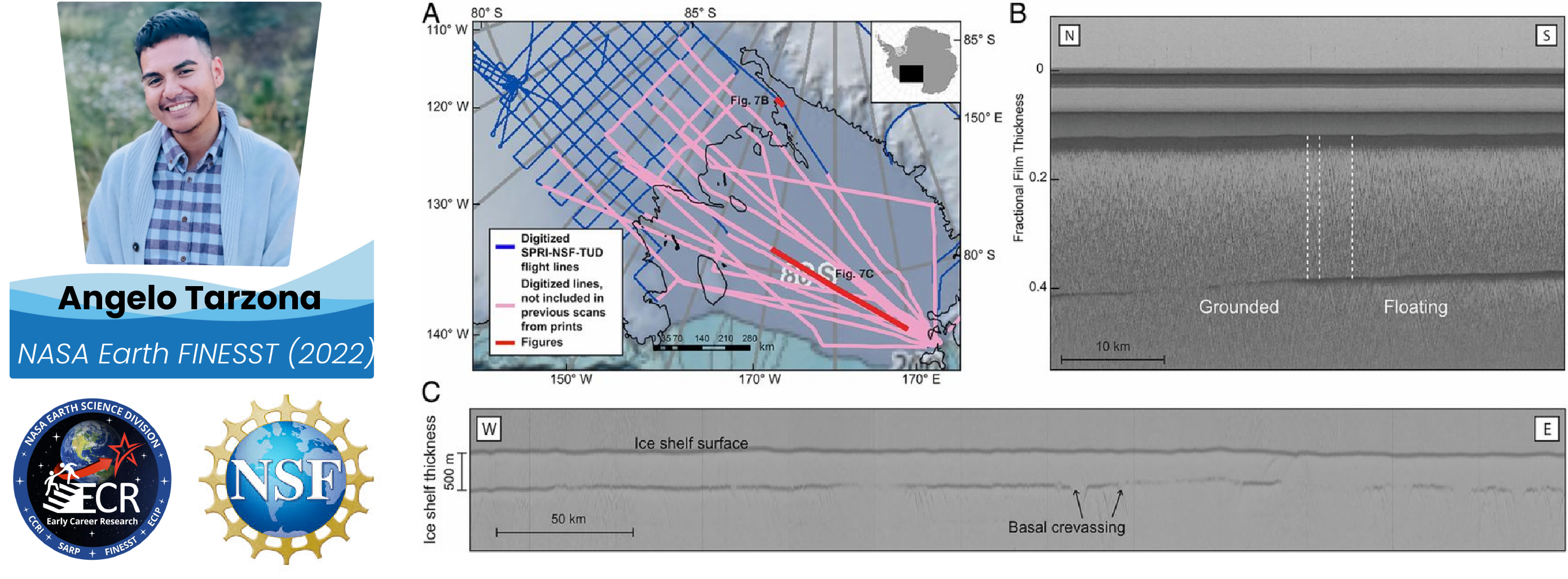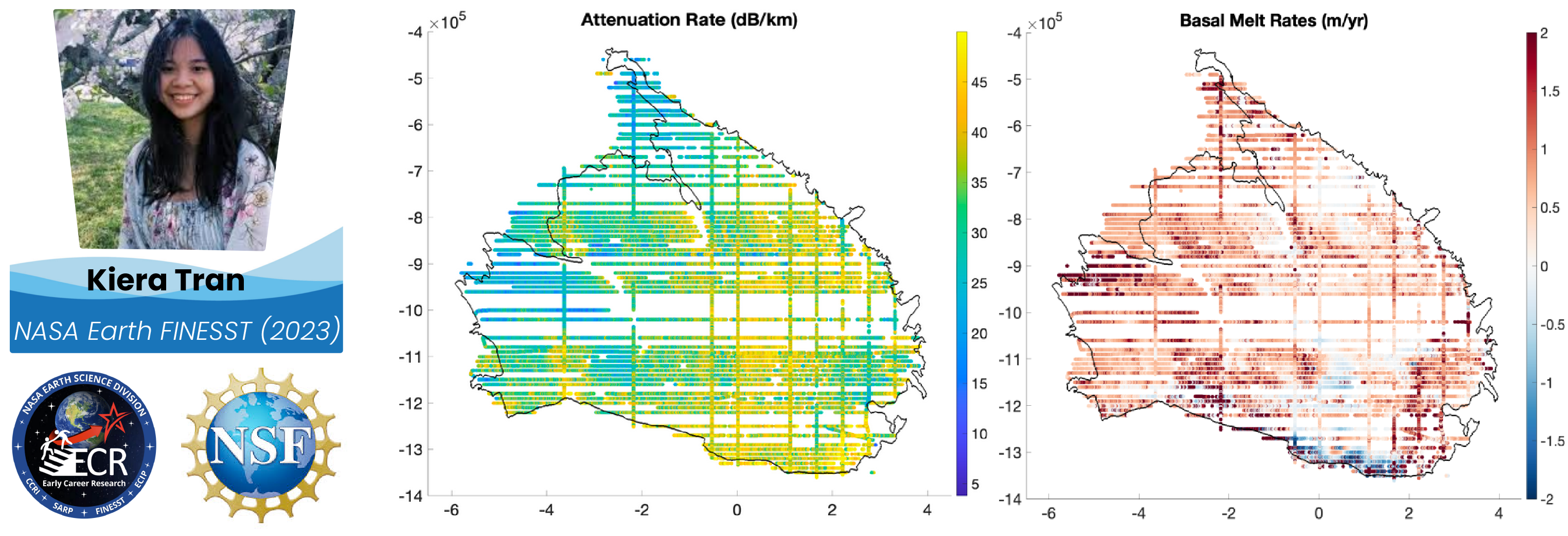Sub-Ice-Shelf Melting
Sub-ice-shelf melting is a critical process that affects the stability of ice shelves and their contribution to sea-level rise. As the ocean warms, increased melting beneath ice shelves can lead to thinning, weakening, and potential collapse, ultimately accelerating the flow of grounded ice into the ocean.
At PGSL, we investigate sub-ice-shelf melting using airborne radar observations and advanced analysis techniques that integrate observations with ice shelf & ocean models to better understand the complex dynamics of ice-ocean interactions and their implications for the future of Antarctica's ice shelves.
Methodology
- Our lab employs two main radar approaches to study sub-ice-shelf melting:
- Direct measurement of multi-decadal ice shelf thickness changes:
- We combine historical airborne radio-echo sounding data from the 1970s and 1980s with contemporary radar measurements to directly examine changes in ice shelf thickness over the past four decades. This approach allows us to quantify long-term trends in ice shelf thinning and identify regions of accelerated change. This work is led by Angelo Tarzona. Click on the figure below to learn more about his work.
- Constraining melt rates through radar observations and modeling:
- We use innovative empirical calibration methods that link radar englacial attenuation to local submarine melt rates, incorporating ice shelves heat advection-diffusion models into standard attenuation calculations. This approach enables us to map the spatial variability of melt rates and investigate the factors controlling sub-ice-shelf melting. This work is led by Kiera Tran. Click on the figure below to learn more about her work.
Selected Publications
Basal Channels
Basal channels are large, canyon-like features carved into the underside of Antarctica's ice shelves. These channels play a crucial role in the complex interactions between ice and ocean, influencing ice shelf stability and the rate of ice loss from the Antarctic Ice Sheet. At PGSL, we investigate basal channels using advanced airborne radar sounding techniques and numerical modeling to better understand their formation, evolution, and impact on ice shelf dynamics.
Methodology
- Our lab conducts radar bed echo analysis to study basal channels beneath ice shelves:
- Radar-based characterization of basal channels:
- We use high-resolution airborne radar sounding data to create detailed maps of the underside of ice shelves, revealing the geometry and distribution of basal channels. We apply several approaches to estimate radar bed roughness and identify different ice shelf basal features, including estimation of radar-derived roughness at the fractal scale, calculating the root-mean-square height and the Hurst exponent. These parameters provide information about the vertical and horizontal scales of roughness, respectively. We also examine radiometric information (received bed power) and the contribution of roughness to the incoherent, scattering energy. This work is led by Kiera Tran in collaboration with Dr. Karen Alley (Uni. of Manitoba). Click on the figure below to learn more about her work.



